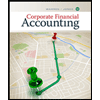Problem: Module 2 Textbook Problem 10 Learning Objective: Module 2-7 Show how different inventory cost flow methods (specific identification, FIFO, LIFO, and weighted average) affect financial statements The Shirt Shop had the following transactions for T-shirts for Year 1, its first year of operations: Jan. 20 Apr. 21 July 25 Sept. 19 Purchased Purchased Purchased Purchased 400 units @ 90 units @ 250 units 60 units $ 4- $5- $7 = $9- During the year. The Shirt Shop sold 650 T-shirts for $14 each. Required Gross margin $1,600 450 1,750 540 a. Compute the amount of ending inventory The Shirt Shop would report on the balance sheet, assuming the following cost flow assumptions: (1) FIFO, (2) LIFO, and (3) weighted average. b. Compute the difference in gross margin between the FIFO and LIFO cost flow assumptions. Complete this question by entering your answers in the tabs below. Required A Required B Compute the difference in gross margin between the FIFO and LIFO cost flow assumptions. FIFO LIFO Difference < Required A Required B >
Problem: Module 2 Textbook Problem 10 Learning Objective: Module 2-7 Show how different inventory cost flow methods (specific identification, FIFO, LIFO, and weighted average) affect financial statements The Shirt Shop had the following transactions for T-shirts for Year 1, its first year of operations: Jan. 20 Apr. 21 July 25 Sept. 19 Purchased Purchased Purchased Purchased 400 units @ 90 units @ 250 units 60 units $ 4- $5- $7 = $9- During the year. The Shirt Shop sold 650 T-shirts for $14 each. Required Gross margin $1,600 450 1,750 540 a. Compute the amount of ending inventory The Shirt Shop would report on the balance sheet, assuming the following cost flow assumptions: (1) FIFO, (2) LIFO, and (3) weighted average. b. Compute the difference in gross margin between the FIFO and LIFO cost flow assumptions. Complete this question by entering your answers in the tabs below. Required A Required B Compute the difference in gross margin between the FIFO and LIFO cost flow assumptions. FIFO LIFO Difference < Required A Required B >
Cornerstones of Financial Accounting
4th Edition
ISBN:9781337690881
Author:Jay Rich, Jeff Jones
Publisher:Jay Rich, Jeff Jones
Chapter6: Cost Of Goods Sold And Inventory
Section: Chapter Questions
Problem 64E: ( Appendix 6B) Inventory Costing Methods: Periodic System Harrington Company had the following data...
Related questions
Topic Video
Question
100%

Transcribed Image Text:Problem: Module 2 Textbook Problem 10
Learning Objective: Module 2-7 Show how different inventory cost flow methods (specific identification, FIFO, LIFO, and weighted
average) affect financial statements
The Shirt Shop had the following transactions for T-shirts for Year 1, its first year of operations:
Jan. 20
Apr. 21
July 25
Sept. 19
Purchased
Purchased
Purchased
Purchased
400 units @
90 units @
250 units
60 units
$ 4-
$5-
$7 =
$9-
During the year. The Shirt Shop sold 650 T-shirts for $14 each.
Required
Gross margin
$1,600
450
1,750
540
a. Compute the amount of ending inventory The Shirt Shop would report on the balance sheet, assuming the following cost flow
assumptions: (1) FIFO, (2) LIFO, and (3) weighted average.
b. Compute the difference in gross margin between the FIFO and LIFO cost flow assumptions.
Complete this question by entering your answers in the tabs below.
Required A
Required B
Compute the difference in gross margin between the FIFO and LIFO cost flow assumptions.
FIFO
LIFO
Difference
< Required A
Required B >
Expert Solution
This question has been solved!
Explore an expertly crafted, step-by-step solution for a thorough understanding of key concepts.
Step 1: Introducing Methods of Inventory Valuation
VIEWStep 2: Calculate the Cost of Goods Sold & Ending Inventory Using FIFO Method
VIEWStep 3: Calculate the Cost of Goods Sold & Ending Inventory Using LIFO Method
VIEWStep 4: Calculate the Cost of Goods Sold & Ending Inventory Using Weighted Average Method Method
VIEWStep 5: Calculate the Gross Profit
VIEWSolution
VIEWStep by step
Solved in 6 steps

Knowledge Booster
Learn more about
Need a deep-dive on the concept behind this application? Look no further. Learn more about this topic, accounting and related others by exploring similar questions and additional content below.Recommended textbooks for you

Cornerstones of Financial Accounting
Accounting
ISBN:
9781337690881
Author:
Jay Rich, Jeff Jones
Publisher:
Cengage Learning

Corporate Financial Accounting
Accounting
ISBN:
9781305653535
Author:
Carl Warren, James M. Reeve, Jonathan Duchac
Publisher:
Cengage Learning

Financial & Managerial Accounting
Accounting
ISBN:
9781337119207
Author:
Carl Warren, James M. Reeve, Jonathan Duchac
Publisher:
Cengage Learning

Cornerstones of Financial Accounting
Accounting
ISBN:
9781337690881
Author:
Jay Rich, Jeff Jones
Publisher:
Cengage Learning

Corporate Financial Accounting
Accounting
ISBN:
9781305653535
Author:
Carl Warren, James M. Reeve, Jonathan Duchac
Publisher:
Cengage Learning

Financial & Managerial Accounting
Accounting
ISBN:
9781337119207
Author:
Carl Warren, James M. Reeve, Jonathan Duchac
Publisher:
Cengage Learning

Corporate Financial Accounting
Accounting
ISBN:
9781337398169
Author:
Carl Warren, Jeff Jones
Publisher:
Cengage Learning